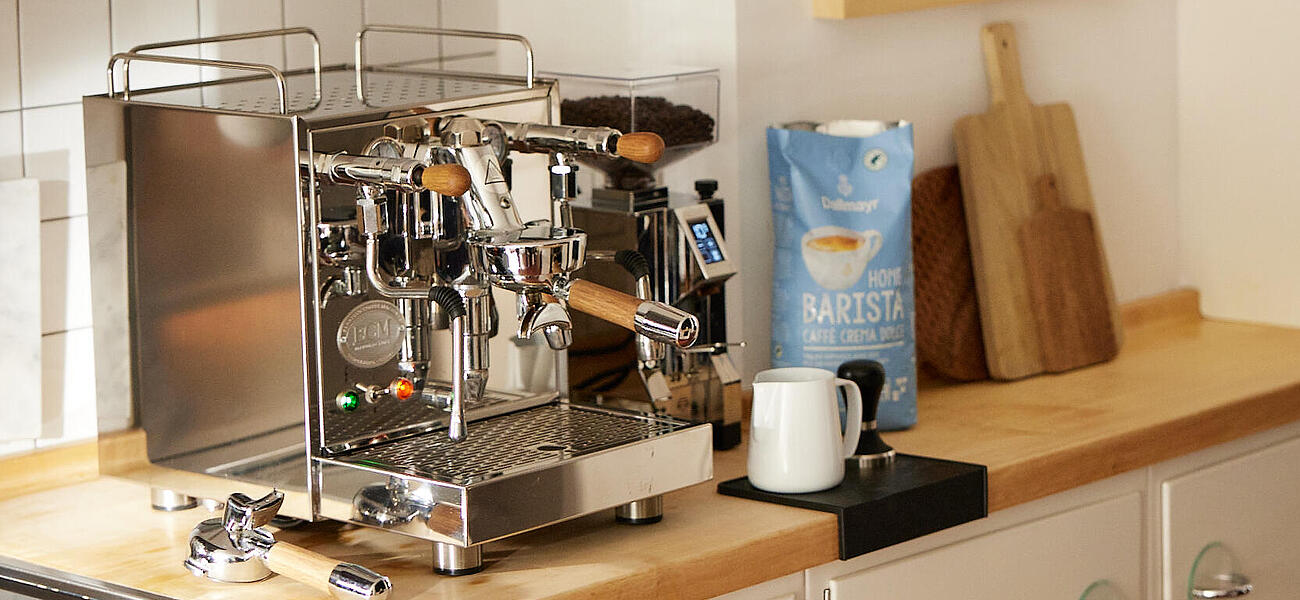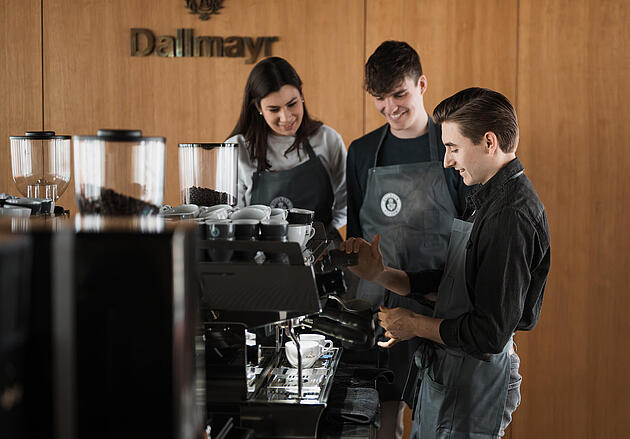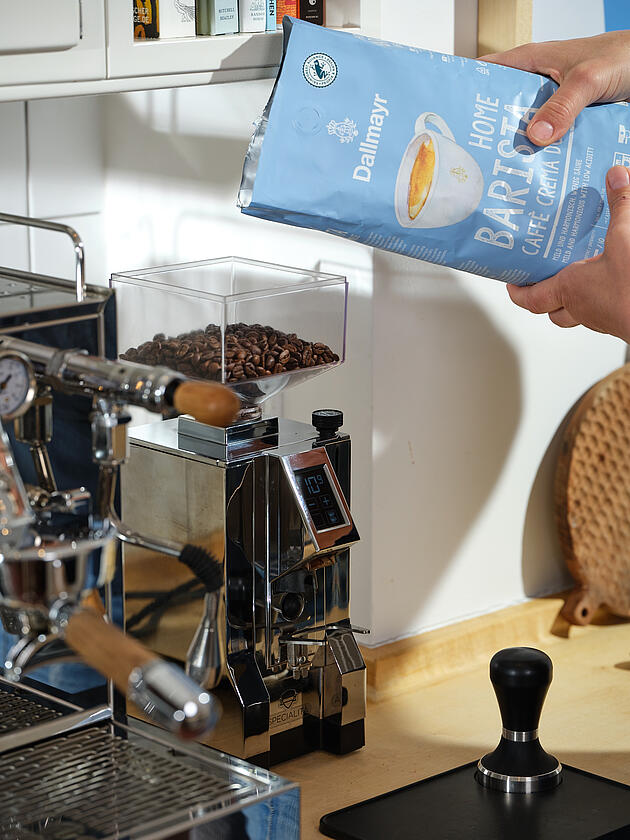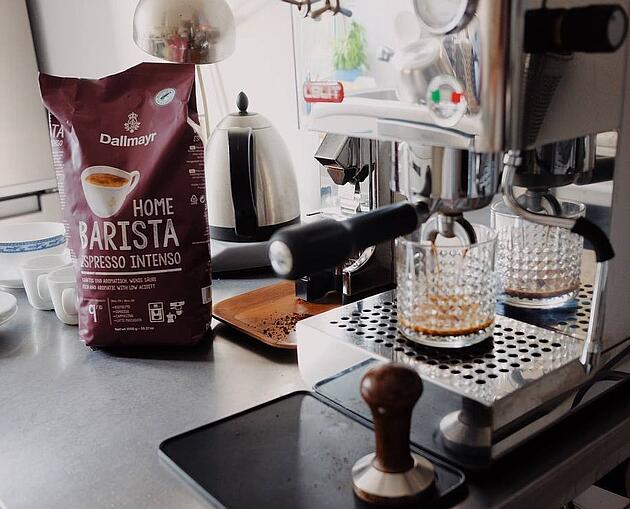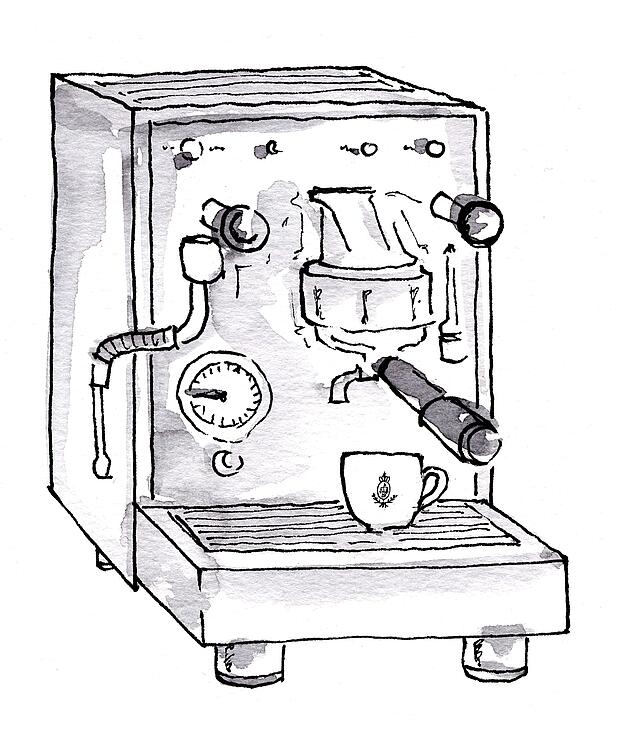A guide to portafilter espresso machines
Dallmayr coffee expert provides tips for buying an espresso machine.
Anyone who wants top-quality coffee at home will, at some point, wonder if it’s worth buying a portafilter espresso machine. With such a huge number of machines to choose from, Phil Semelink is here to help. The coffee expert and training manager at the Dallmayr Academy explains which machines are suitable for aspiring hobby baristas and which factors you should always consider before buying.
More and more people are investing in a portafilter espresso machine. Why is that?
Yes, whole bean coffee is currently all the rage – as is preparing coffee in a portafilter espresso machine. In general, we’ve noticed that people are developing a greater awareness and appreciation for high-quality coffee. They’re interested in where their coffee beans come from and how the roasted coffee is produced. And they want to prepare it to the best possible quality. Many of them discovered the joys of coffee craftsmanship when they began working from home. For coffee lovers, preparation in a portafilter machine is synonymous with making the perfect espresso – and a little dolce vita in your own home is always a good thing!
So anyone who’s passionate about coffee needs a portafilter espresso machine?
Well, that depends on how you like to drink your coffee. For those who enjoy espresso-based coffee drinks and who want to get actively involved with making coffee, a portafilter espresso machine is a good investment. The machine encourages you to experiment and is ideal for learning more about the enormous variety of coffee flavours.
What do I need to know before buying a portafilter espresso machine?
Before taking that step, always ask yourself how you actually like to drink your coffee. This will help to determine which kind of espresso machine is best for you. Those who only drink a straight espresso, for example, will choose a different model than a cappuccino lover. The grinding level of the beans and the quality of the ground coffee are also vital for the flavour of your espresso. That’s why you should also plan enough budget for a good coffee grinder. The grinder is just as important as the machine, and you’ll find a good model from around 300 euros. Owning a portafilter espresso machine also requires a certain level of patience. Not everything runs smoothly when you begin preparing coffee with the machine – but that’s completely normal. The perfect coffee needs practice!
There’s often talk about single-boiler and heat-exchange machines. What is the difference?
That’s right – the main types of espresso machine for hobby baristas are single boilers and heat exchangers. These are machines with one boiler unit. A single-boiler machine (sometimes called a single-circuit machine) only has one water circulation system that supplies the water for brewing the coffee and steaming the milk. That means it isn’t possible to prepare espresso and steamed milk at the same time – you have to switch between these settings and wait for the machine to change over. So this machine is ideal if you love a good espresso and don’t drink much cappuccino. One of its main benefits is the price: you can get a great single-boiler machine for around 600 euros. You’d be hard pushed to find a good one for less. A heat-exchange machine (sometimes called a dual-circuit machine) also has one boiler unit, but two water circulation systems. If you love cappuccino, then this is the machine for you. Here, it’s much easier to steam milk and make a top-quality espresso at the same time without the hassle of switching backwards and forwards between the machine settings. However, these dual-circuit heat exchangers often take a little longer to heat up and, starting at around 1,000 euros, are more expensive than single-circuit models. There is no upper limit to the price.
Did you know?
The Italian Angelo Moriondo patented the first espresso machine in 1884 with the aim of shortening his customers’ waiting times. Still, many years of development were required before the machines could provide a perfect espresso experience.
What machine settings do I need to observe?
Coffee is a sensitive natural product, so even small differences in preparation can have a major impact on quality and flavour. For example, a fast flow rate – i.e. how quickly the water flows through the coffee – will accentuate the coffee’s acidity. The longer the flow rate, the more bitter components are extracted from the coffee. You can get the flow rate right by varying the grind size and the amount of ground coffee you use. There’s no such thing as the perfect settings: different coffees need different settings to achieve the best results. That’s why choosing the right beans is essential. After all, the result in the cup can only be as good as the quality of the coffee beans – I recommend the Dallmayr Home Barista range. Once you’ve set everything up, it’s time to experiment and practice.
Would you like to learn more about coffee and how to prepare it? Then why not pay us a visit at the Dallmayr Academy?
About Phil Semelink
For Phil Semelink, coffee is about more than just a caffeine kick in the morning. “Coffee is about passion and the heart. It’s a ritual that you dedicate time to,” he says. Phil was already gaining experience with coffee at the age of 14, when he started helping out at his parents’ roastery. There, he learned all about coffee beans and how they are processed. Today, he passes on this knowledge in courses at the Dallmayr Academy and also develops new training concepts.
